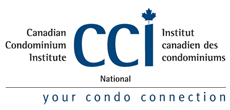It’s becoming more and more clear that condominium corporations across Canada have obligations to protect their residents from second-hand smoke (particularly residents with health issues). How can these obligations be satisfied? Here are some possibilities:
- Often a logical first step is to ensure that penetrations and joints between units and between units and common elements are reasonably sealed or tight. [This is typically also a Fire Code requirement.]
- Ensure that air make-up systems are operating properly.
- Ensure that hallways and units are properly pressurized – ie. that air make-up systems are able to do their jobs.
- Smoke will travel from higher pressure to lower pressure. So, it’s important to ensure that the “smoker unit” has strong, functioning exhaust systems (which will “depressurize” the unit); and of course it’s important that the smoker make use of them. [In some cases, it may even make sense to take steps to add air pressure to the “receiving units” and to reduce air pressure in the “smoker unit”.] These issues can best be reviewed with an expert in the field.
- The smoker should perhaps operate an air purifier in his or her unit. [The corporation can also consider passing a Rule requiring that smokers use air purifiers, and that smokers otherwise take steps to prevent smoke or odours from escaping the unit.]
- The smoking or smoke transfer may violate current provisions in the corporation’s governing documents. If so, the corporation will need to take reasonable enforcement steps (in an effort to stop the violation).
- Finally, the corporation can consider restrictions, or a ban, on smoking, by way of an amendment to the Declaration, By-laws or Rules (depending upon the jurisdiction). Current smokers might have to be grandfathered, if a ban or restriction is implemented. [I recommend that these issues be reviewed with the corporation’s legal counsel.]before the B.C. Human Rights Tribunal:
McDaniel v. Strata Plan LMS 1657 (B.C. Human Rights Tribunal)
